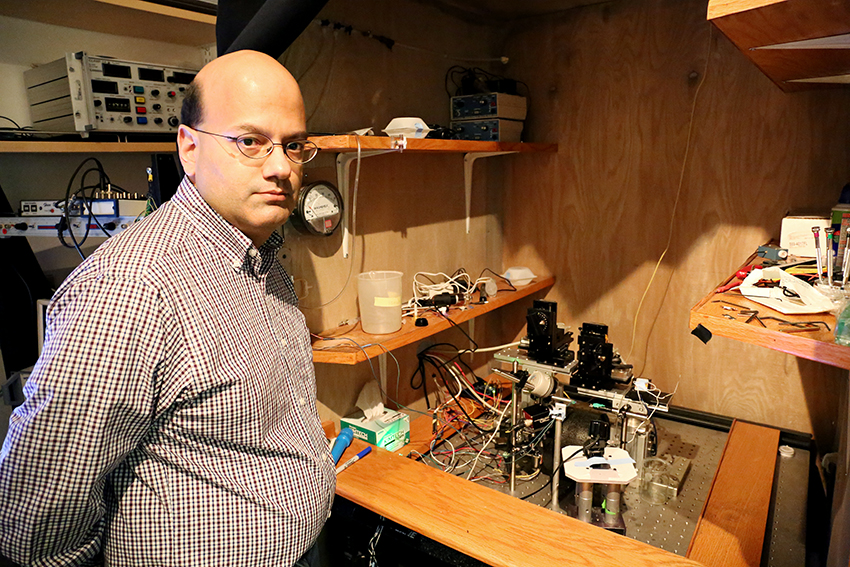One-man team Niraj Desai, a lecturer and research scientist in the Center of Learning and Memory, is at the forefront of a new method of automation that will provide more insight into the workings of neurons.
The technique that Desai automated, known as whole cell patch-clamping, analyzes the electrical output within individual neurons.
Usually, only the most experienced researchers can look at the insides of neurons as they fire. With automation, even inexperienced scientists could perform this procedure.
“I’m the person who’s really been the cheerleader for automation,” Desai said. “I just thought it’d be interesting to do.”
The process is difficult for a number of reasons. It operates at an minute level — the researcher must be especially dexterous. As a result of its difficulty, the technique is only practiced by the most experienced scientists, according to Desai.
“It’s probably done in a few dozen laboratories worldwide,” Desai said.
Beginning the process is simple. First, an electrode that will measure electrical output of the neuron is inserted into a small hole in the skull of a mouse. Then the researcher inserts the electrode into the brain toward the area of interest, searching for a neuron to latch onto.
This is when the operation gets more difficult, according to Desai. The final steps involve creating a tight seal between the electrode and the neuron. Finally, the scientist ruptures a small patch of membrane that rests next to the electrode, allowing the electrode to enter the neuron.
Typically, scientists analyze how neurons interact with one another. However, this procedure doesn’t allow for an understanding of what prompts a neuron to fire a signal.
“Patch-clamping provides a unique view into neural circuits, and it’s a very exciting technique but is really underused,” Karel Svoboda, a neuroscientist at the Janelia Research Campus, said in an article in the journal Nature.
Automating this task would change the rules of the game for researchers. Currently, students learn all techniques in a laboratory environment.
“You go to a laboratory, and somebody who’s done this technique teaches it to you,” Desai said. “Here, we have a system that’s really automated. The barriers to entry become much lower.”
Desai hopes to achieve a number of things with his automation technique. He hopes that it will allow new researchers to better use difficult techniques they otherwise wouldn’t be able to do.
He also hopes that it will increase the amount and quality of data that researchers can get from the technique.
“There’s something a bit repetitive about patch-clamping. It can get a little boring,” Desai said. “The goal is that computers or automated systems won’t make any mistakes that a human might.”
One of the difficulties associated with Desai’s experiment is his use of active, conscious mice, which allows him to observe mouse behavior along with neuron activity. Many other researchers test their automation techniques on sleeping mice, which Desai believes decreases the accuracy of the data.
“Anesthesia can sometimes distort results,” Desai said. “It interacts with ions and changes the basic biology of the cell, so that the results you get are different.”
Desai experiments with a mouse running on a wheel. A mechanism that was designed by Raymond Chitwood, a research scientist in the same lab as Desai, fixes the head of the mouse in place to limit movement.
However, using live mice can complicate matters. Since patch-clamping is so delicate, the slightest movement could disturb it.
“In our systems, it’s about movement. The behavior on the wheel is a bit varied,” Desai said. “Sometimes the mice will just sit there. Sometimes they’ll groom. Sometimes they’ll run.”
With his current system, Desai reports a success rate of 17 percent, a bit lower than the typical 20 to 60 percent achieved by non-automated methods. However, Desai said he hopes to implement further improvements.
He plans to use a small camera to observe the mouse’s movement, which would allow him to proceed further into the mouse’s brain when the mouse is still. If the mouse started running, the machine would pause.
“Timing those steps in relation to movement might be a very good thing to improve the process,” Desai said.















